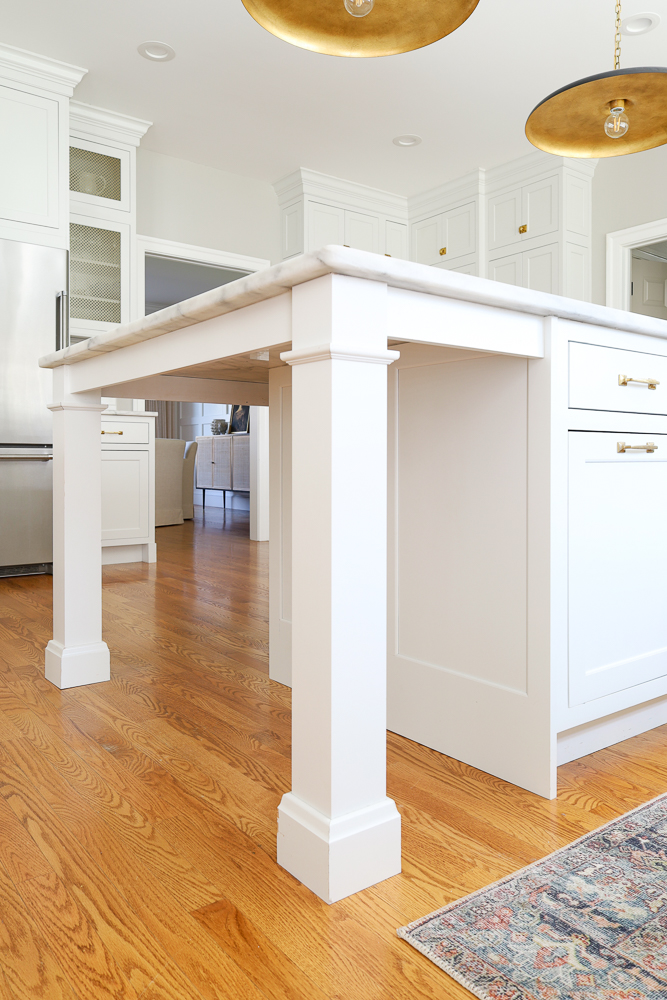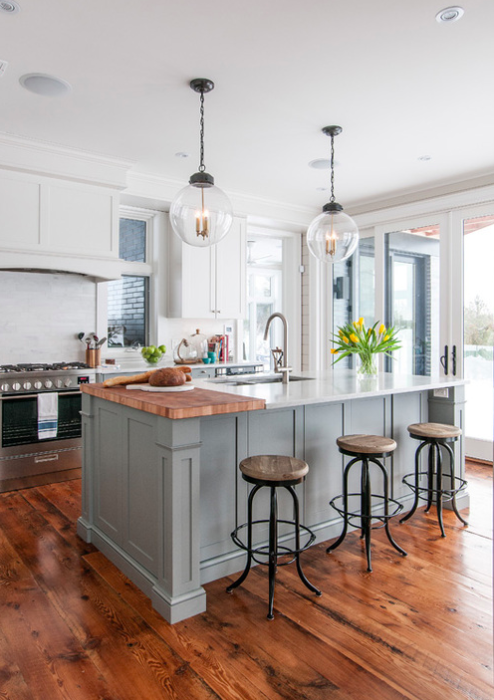Exploring the Different Styles of Legs For Kitchen Area Island: What You Required to Know
In the world of cooking area layout, the choice of legs for your island is more than a simple aesthetic decision; it considerably influences both style and functionality. From the smooth class of contemporary metal to the ageless appeal of standard wood, each option presents unique advantages and layout opportunities. Industrial designs can give a tough personality, while rustic farmhouse legs evoke a sense of heat and practice. In addition, the introduction of special ornamental legs enables personal expression within functional furniture. The question remains-- just how do you figure out which style best straightens with your vision?
Modern Metal Legs
Modern steel legs have come to be a prominent selection for kitchen area islands, supplying both toughness and a smooth visual. These legs are generally crafted from products such as stainless steel, light weight aluminum, or wrought iron, making them resistant to tear and use, which is crucial in a high-traffic area like the cooking area. Their robust building guarantees stability, suiting the weight of heavy counter tops and daily use.
In enhancement to their strength, modern-day metal legs been available in various designs, from minimal to commercial designs, enabling house owners to tailor their kitchen area islands to their one-of-a-kind tastes. The reflective surfaces of metal can include a modern touch, enhancing the overall brightness of the kitchen area area. Metal legs can be matched with a large variety of kitchen counter products, integrating flawlessly with granite, quartz, or also redeemed timber.
Another benefit of steel legs is their convenience of upkeep; they can be merely cleaned to get rid of any kind of discolorations or spills, ensuring longevity and sanitation. Overall, modern-day steel legs not just supply architectural support for kitchen area islands but also contribute significantly to the visual appeal, making them a popular option for contemporary cooking area designs.
Conventional Timber Legs

Standard timber legs can take various types, consisting of turned, tapered, or square styles. Transformed legs include a rounded profile with elaborate describing, adding a touch of sophistication. Conical legs, on the other hand, offer an even more structured look while maintaining a standard ambiance. Square legs offer a robust appearance, which can produce a feeling of security and weightiness in the layout.
Additionally, timber legs can be tarnished or repainted to match existing kitchen cabinetry or decoration, offering personalization alternatives that boost the overall visual of the kitchen. Combining these legs with a timber kitchen counter or various other wooden components can produce a natural look, highlighting the warmth and character that conventional wood gives cooking area islands. Hence, typical wood legs stay an ageless choice for those seeking elegance and functionality in their kitchen layout.
Industrial Design Legs

The adaptability of industrial legs enables them to enhance a variety of counter tops, from redeemed wood to polished concrete. Their integral strength guarantees durability, making them appropriate for sturdy use. Furthermore, the minimal style often linked with commercial style legs can improve the total area without overwhelming it.
Color choices typically vary from matte black to cleaned nickel, enabling customization to match specific choices. Legs For Kitchen Island. Industrial legs can be integrated into various kitchen area setups, from open-concept areas to much more small styles. This versatility makes them an appealing choice for contemporary house owners looking for both capability and design. Eventually, commercial style legs can transform a kitchen island right into a declaration item, weding kind and feature in an unified way.
Rustic Farmhouse Legs
Rustic farmhouse legs embody a lovely mix of practice and warmth, making them a popular selection for kitchen areas that seek to stimulate a comfy, inviting atmosphere. Identified by their strong construction and all-natural products, these legs typically feature timber with a distressed coating, showcasing the appeal of imperfections that features age. This aesthetic not just strengthens the farmhouse style yet also includes character and credibility to the kitchen area space.
Commonly, rustic farmhouse legs are developed with durable, chunky accounts that offer significant support for the cooking area island. Frequently crafted from reclaimed wood, they add to a sustainable layout while providing an one-of-a-kind story via their varied appearances and tones. The natural grain i was reading this patterns and knots linked here discovered in these products improve the aesthetic appeal and bring a sense of nature inside.
In enhancement to their aesthetic value, rustic farmhouse legs can be paired with different tabletop materials, such as butcher block or stone, producing an unified balance between rustic beauty and modern performance. This versatility allows house owners to customize their kitchen islands according to individual preferences, ensuring that the area stays both functional and fashionable for everyday use.
Distinct Ornamental Legs
Frequently neglected, special attractive legs can change a basic kitchen area island right into a declaration item that mirrors specific design and creativity. These legs serve not only as structural supports but likewise as creative expressions that improve the general aesthetic of the kitchen area.
Offered in a range of styles, special attractive legs can vary from complex functioned iron scrollwork to strongly turned wood patterns. For those leaning towards a much more modern appearance, sleek metal legs in geometric forms can provide a minimal yet eye-catching allure. Reclaimed wood legs with artisanal describing bring heat and personality, lining up with sustainable layout concepts.
Integrating distinct decorative legs into your cooking area island enables limitless personalization. Color, texture, and type can be adjusted to integrate with existing decor or to present an interesting contrast. Combining a rustic wooden top with sleek brass legs produces a striking juxtaposition that attracts the eye.
Ultimately, picking special ornamental legs is an opportunity to share personal preference while ensuring performance. By prioritizing both layout and longevity, house owners can create a cooking area island that not only attracts attention however additionally serves as a sensible centerpiece for cooking ventures.
Verdict
Modern steel legs provide a streamlined appearance, while standard wood legs supply warmth see this site and personality. Industrial-style legs introduce an urban allure, and rustic farmhouse legs highlight natural appeal and sturdiness.
A selection of conventional timber legs can improve the charm and heat of cooking area islands, appealing to property owners who prefer a timeless aesthetic. Coupling these legs with a timber countertop or various other wood components can produce a cohesive appearance, highlighting the heat and character that standard timber brings to kitchen area islands. Modern steel legs supply a streamlined appearance, while traditional timber legs use warmth and personality. Industrial-style legs introduce a metropolitan appeal, and rustic farmhouse legs highlight all-natural beauty and strength. Special attractive legs offer as a method of personalization, making certain that the kitchen area island not only supports useful use but also enhances the general style of the kitchen.